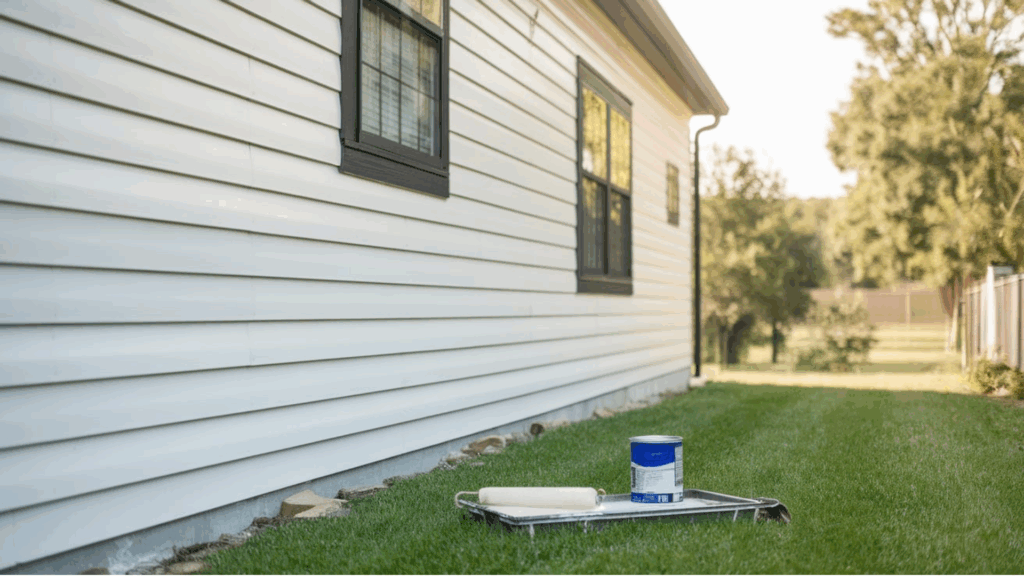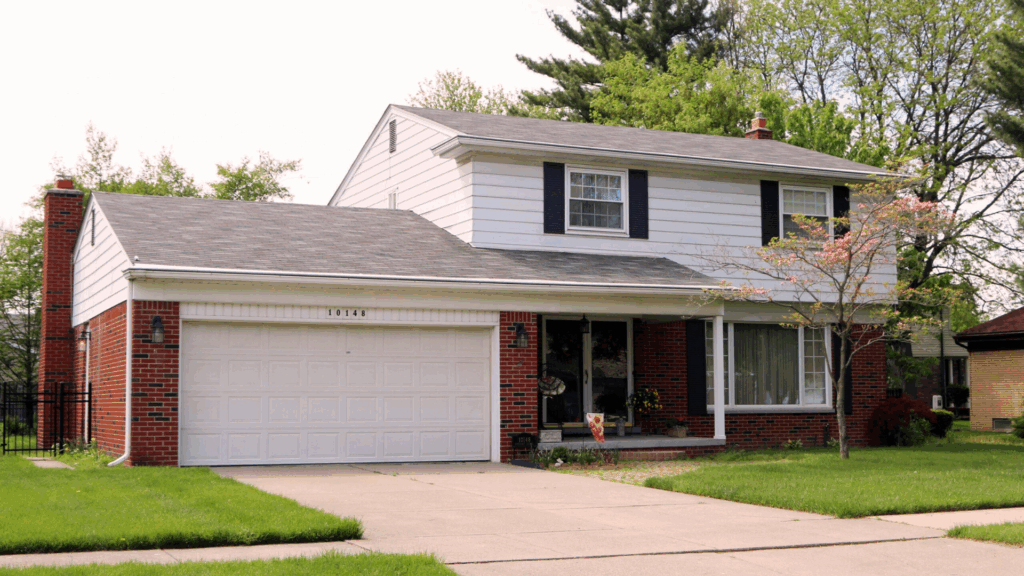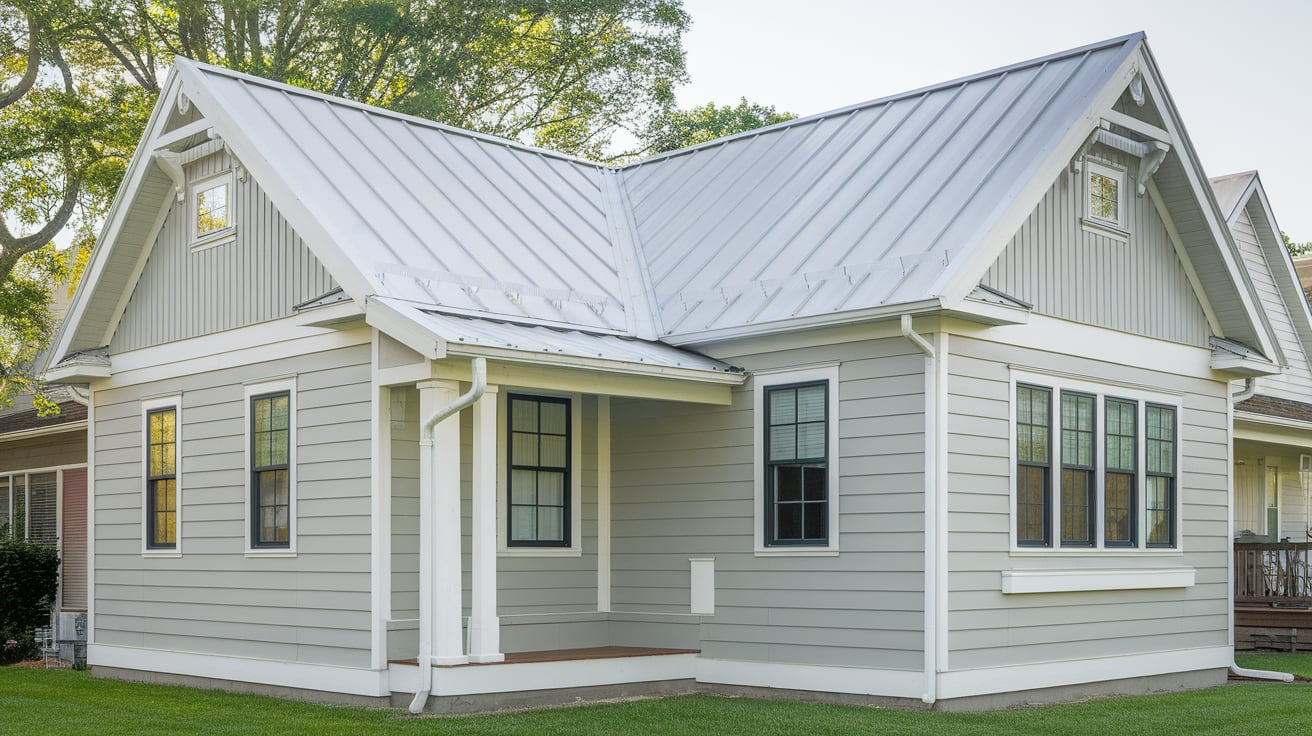Thinking about painting your aluminum siding? You’re not alone. A lot of homeowners ask the same question: Is it a smart move or just more trouble than it’s worth?
Aluminum siding was once a top pick for houses, but as it ages, it can fade, chalk, or look worn out. Painting might seem like a quick way to give your home a refreshed look without spending a ton of money.
But before you grab a brush, it’s important to know what you’re getting into. Some people appreciate the outcome, while others regret doing it.
In this blog, I’ll discuss the pros and cons, what worked for some homeowners, and what didn’t for others.
If you’re wondering if painting your aluminum siding is a wise idea, this guide will help you make a well-informed choice for your home.
Benefits of Painting Aluminum Siding

Painting aluminum siding offers several practical advantages, particularly for homeowners who want to refresh their property’s appearance without the significant expense of a full replacement.
Cost-Effectiveness
Choosing to paint instead of replacing aluminum siding is generally far more affordable.
While new siding can cost thousands of dollars in materials and labor, painting typically requires only a few gallons of quality exterior paint, basic supplies, and some time.
When done properly, a painted finish can last for many years and significantly improve your home’s appearance.
Additionally, a clean, well-maintained exterior can increase perceived home value, which may benefit homeowners looking to sell.
Visual Improvement
One of the primary benefits of painting is the ability to change the look of your home completely.
You’re not stuck with the original siding color; you can pick from a wide variety of shades that match your taste or the style of your neighborhood.
No matter if you prefer a classic neutral, a bold accent, or something more contemporary, paint provides the flexibility to update your home’s style.
A smooth, even coat of paint can also hide minor imperfections and give the surface a more uniform, updated finish.
Environmental Considerations
Painting your existing siding rather than replacing it helps reduce the amount of waste sent to landfills.
This approach conserves resources and minimizes the environmental impact associated with manufacturing and transporting new materials.
By extending the life of your current siding, you make a more sustainable choice that benefits both your home and the environment.
Pros and Cons of Painting Aluminum Siding
Before painting your aluminum siding, consider its pros and cons. This table makes it easy to compare and see if it’s the right choice for your home.
| Pros | Cons |
|---|---|
| Lower Cost & More affordable than replacing siding completely. | Takes Time & Requires cleaning, sanding, and priming beforehand. |
| Updated Color & Choose a new shade to match your style or neighborhood. | Needs Maintenance & May require repainting every 5&10 years. |
| Improved Appearance & Makes worn siding look fresh and boosts curb appeal. | Might Peel & Poor prep or wrong paint can lead to peeling or bubbling. |
| Environmentally Aware & Reduces waste by reusing existing siding. | Not a Repair & Won’t fix dents, rust, or structural damage. |
| Faster Than Replacement & Can be completed in a few days. | Can Look Worn & May fade or appear patchy over time if not maintained. |
Painting Aluminium Siding: Homeowners’ Experiences
Painting aluminum siding can be a good way to refresh your home’s look, but it’s important to know what you’re getting into. Let’s look at some real-life experiences from homeowners who have painted their aluminum siding.
Positive Outcomes
Many homeowners have successfully painted their aluminum siding and are pleased with the results.
For instance, a homeowner shared that after repainting their aluminum siding, their house looked completely refreshed, and the paint held up well for over 15 years with proper preparation and quality materials.
Another homeowner mentioned that painting their aluminum siding was a cost-effective way to improve their home’s appearance.
They emphasized the importance of thorough cleaning and using the right primer to ensure the paint adhered properly and lasted for years.
Negative Experiences
Conversely, some homeowners have faced challenges. One common issue is paint peeling due to inadequate surface preparation.
A homeowner reported that after a few years, the paint started to peel because the oxidation had not been removed before painting.
Another concern is the time and effort required. One homeowner found the process labor-intensive, noting that cleaning, sanding, and priming the siding took more time than expected.
They also mentioned that without proper upkeep, the paint began to fade and needed touch-ups earlier than they had hoped.
Best Practices for Painting Aluminum Siding

If you want your paint job to look clean and last a long time, follow a few key steps. These are the recommended practices for getting the job done properly.
Surface Preparation
- Clean the siding using a garden hose or pressure washer to remove dirt, mold, and chalky residue.
- Let the surface dry fully before doing anything else.
- Check for oxidation by rubbing your fingers on the siding; white marks mean it’s still there.
- Use a cleaner made for aluminum siding to scrub off oxidation.
- Scrape away any old or peeling paint to ensure a smooth surface for painting.
Choosing the Right Paint and Primer
- Use a metal or aluminum-specific primer to help paint stick properly.
- Choose 100% acrylic latex paint for strong adhesion and weather resistance.
- A satin or eggshell finish works well outdoors and looks clean for longer.
Application Techniques
- Use a brush for corners, edges, or small areas.
- Rollers and sprayers are best for covering large, flat sections quickly.
- Apply paint in thin, even layers to avoid drips or peeling.
- Always follow the instructions on the paint can for best results.
When to Replace Aluminum Siding?
If your aluminum siding is deeply dented, badly rusted, or covered in peeling paint, replacement may be a more suitable option.
New siding materials, like vinyl, fiber cement, or engineered wood, can give your home a completely different appearance and require less maintenance over time.
While the initial cost is higher than painting, replacement often increases your home’s value and lasts significantly longer, sometimes up to 30&50 years.
It’s also a chance to add insulation under the siding, which can improve energy efficiency. If you plan to remain in your home for a while, investing in new siding may be worthwhile.
How to Maintain Aluminum Siding?

Once your aluminum siding is painted, regular care helps it stay looking fresh and last longer. I’ve found that a little maintenance goes a long way when it comes to keeping the paint job in good shape.
- Clean the surface once or twice a year with mild soap and water to remove dirt, dust, and mildew. Avoid harsh cleaners that could damage the finish.
- Inspect the siding regularly for chips, peeling, or fading. Catching small issues early prevents bigger problems later.
- Touch up damaged spots with leftover paint to keep the surface sealed and looking even.
- Avoid power washing too closely, as it may strip the paint. Use low pressure and rinse gently.
- If the paint starts to dull after several years, consider applying a fresh topcoat to bring back its color and protection.
Taking these steps helps your painted siding look great year after year.
Conclusion
Painting aluminum siding can be a good way to update your home’s look without spending a lot of money. With this approach, you can upgrade your home’s appearance by choosing a new color, all while reusing your existing siding.
But it’s not always the right choice for everyone. If the siding is old, damaged, or already painted many times, the results might not last.
Some homeowners have had solid outcomes with painting, while others ran into peeling paint and extra work. That’s why proper prep, the right paint, and regular maintenance are so important.
If you’re not sure painting is a worthwhile option, you can also think about replacing the siding or just keeping it clean and shielded.
Every home is different, so consider the pros and cons before starting. With the correct choice, your home can maintain a strong appearance for years to come.

